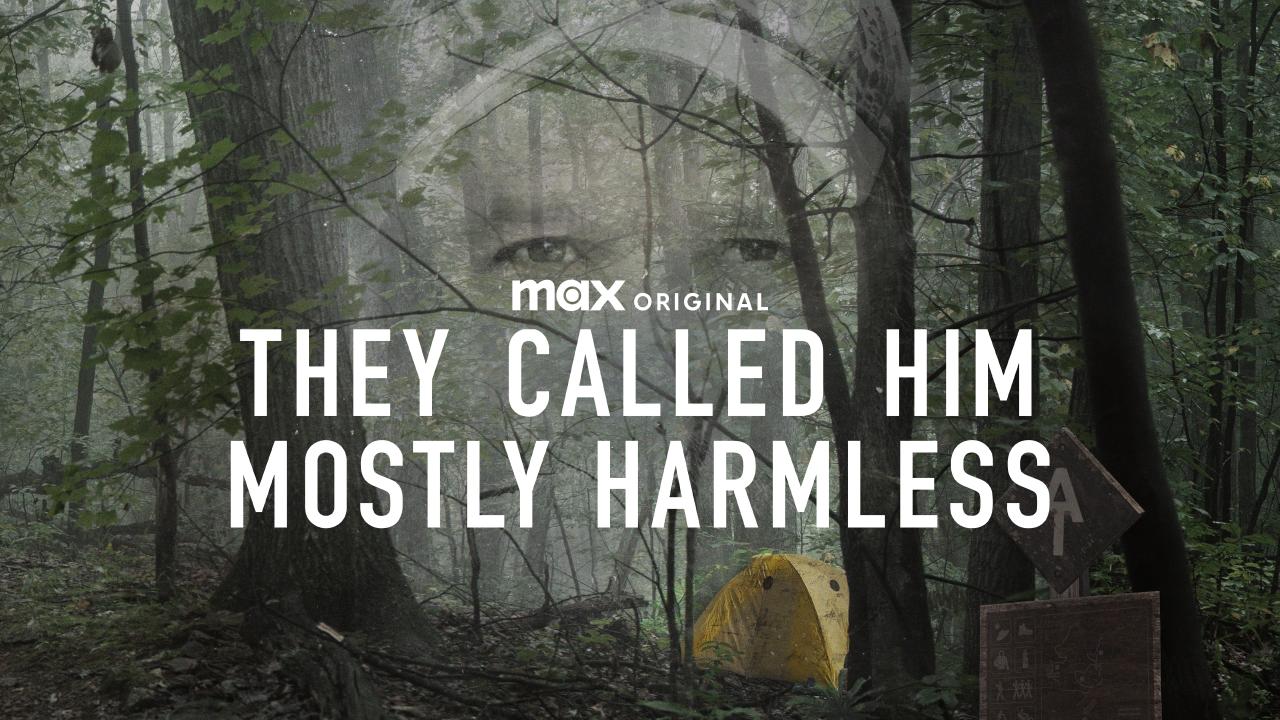They Called Him Mostly Harmless Review
They Called Him Mostly Harmless is a study in the polarities of the internet and then some. Patricia E. Gillespie’s documentary (Max, Feb. 8) centers on online detectives’ efforts to help law enforcement identify a male hiker discovered dead in Florida’s Big Cypress National Preserve. Every new detail just raises more questions in this case, which quickly drew the rabid attention of cybersleuths whose toxic behavior toward each other and potential suspects at least partly offset their value in tracking down leads.
Those push-pull dynamics are everywhere in They Called Him Mostly Harmless, a mystery that took years to solve, revealing not only how stories defy fiction-inspired expectations but also how they often don’t follow real-world logic either.
On July 23, 2018, a man hiking through South Florida called 911 to report discovering someone dead in a tent pitched near the trail he was following through Big Cypress National Preserve. When lead detective David Hurm arrived at the scene and removed the tent’s rain fly, he found himself confronted with an enigma. The emaciated corpse within appeared to have starved itself to death it weighed just 83 pounds even though there were plenty of calories around (a stack of cash and food) and medical help nearby (a truck stop within walking distance). There were no visible injuries on his body; signs of trauma or struggle were absent from the campsite. No drugs were present; toxicology would show only Tylenol in his system. He had no wallet or identification; nothing indicated his name or where he came from except for a journal filled with inscrutable computer code.
Stumped for any better idea, Hurm and company created a flyer bearing a touched-up composite image of the unknown man’s bearded face. That got noticed by Kelly Fairbanks, who recognized him as someone she’d encountered on the Appalachian Trail where most people knew him as “Mostly Harmless,” his trail name. Having snapped a photo during their brief meeting (he’d said he was “off the grid” and didn’t have a phone, which struck her as reckless), she posted it on an online Florida trail group. It went viral there and in other places, eventually reaching Christie Harris, a Richmond-based delivery worker who had always wanted to be an FBI agent so much so that within days of joining the Facebook group dedicated to Mostly Harmless’ case, she was made its administrator.
When the photograph of Mostly Harmless went viral, it prompted more people to come forward with stories about having met him on the Appalachian Trail. He was described in those accounts as a friendly person with an unusually large backpack who wanted to keep his real name secret. That sounded about right to the members of They Called Him Mostly Harmless as why else would anyone join a hiking community except to get away from something or start over? To them, he was just another traveler passing through on his own terms, and the fact that he didn’t avoid people (like Marge “MJ” Creech or Brandon Dowell, who both spent time around him and knew him as “Denim”) made him seem like any other guy looking for some peace and quiet among kindred spirits.
Investigators traced Mostly Harmless’ notebook back to Screeps an online game for programmers but that too proved a dead end. Still, digital sleuths didn’t give up, their Facebook groups eventually numbered in the thousands. The tips flowed in: Mostly Harmless was an alien. A time traveler. A ghost. Meanwhile, Christie had ceded control of her Facebook group to Natasha Teasley, an outdoorswoman who’d taken over after meeting Christie on the trail; online tensions erupted into all sorts of nasty posts, which only served as much of a distraction as they did a benefit.
This tech noxiousness was part of what Mostly Harmless had left behind by smartly covering his digital tracks before hitting the Appalachian Trail. But still: Christie, Natasha and everyone else were strangers who had banded together in service of what they believed to be a noble cause; if anything, this story is most interesting as one that illustrates how people come together and move apart when they try (or don’t) fill or fix the holes in their lives. Gillespie’s film suggests those measures aren’t always productive or sane like with Ben Reynolds, who’d made an online journal about using hiking to come to terms with a cancer diagnosis, and became the object of harassment from many cybersleuths convinced he was Mostly Harmless.
The complete understanding of Mostly Harmless began when this happened a widely read Wired article about the case, an Othram DNA profile which revealed Louisiana (where Mostly Harmless claimed to be from) as the state most likely to hold his genetic material; and then, a tip that came in to Christie with a name attached. That name was Vance Rodriguez. But what once looked like the end of some strange and tragic story turned out, instead, to be where things got really weird. Suddenly, it seemed clear that everybody’s favorite romantic victim of mysterious circumstances had just been an asshole all along. Vance was a loner by trade, estranged from his family by what sounds like serious mental illness and if Thompson’s interviews with multiple girlfriends are any indication, that illness also made him into something even worse than a mere misanthrope. As Thompson puts it: “That’s also why nobody could identify him he wasn’t just good at hiding his tracks; he was an asshole.”
For this reason, They Called Him Mostly Harmless is both a book about Mostly Harmless a man who never existed and a book about Vance Rodriguez a man who ought not to have existed and therefore also a book about how true crime stories can lead us astray, sometimes very far indeed, from the truth.
Watch They Called Him Mostly Harmless For Free On Gomovies.


.jpg?w=1024&resize=1024,1024&ssl=1)
.jpg?w=1024&resize=1024,1024&ssl=1)
.jpg?w=1024&resize=1024,1024&ssl=1)
.jpg?w=1024&resize=1024,1024&ssl=1)
.webp?w=1024&resize=1024,1024&ssl=1)
.jpg?w=1024&resize=1024,1024&ssl=1)
.jpg?w=1024&resize=1024,1024&ssl=1)
.jpg?w=1024&resize=1024,1024&ssl=1)